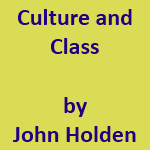In 1986, a McDonald’s opened near the historic Spanish Steps in Rome. It was the inciting incident that prompted culinary writer Carlo Petrini to launch Slow Food, a grassroots movement and counter-revolution to the fast food industry, which had ‘revolutionized’ dining beginning in the early twentieth century. I’ve been wondering the past couple years whether the ‘high arts’ sphere in the US might benefit from modeling some of Slow Food’s strategies. For example:
- Through festivals and events, Slow Food connects everyday people (not just ‘major donors’ or ‘underserved youth’) directly with the farmers and artisans from their community because it believes if you have a relationship with your local poultry farmer, and understand how he raises his birds, you may be more likely to give him your business rather than Tyson.
- Slow Food knows that many taste buds have become accustomed to fast food so it helps adults and kids reawaken their senses and study all aspects of food by offering Taste Education events that are an integral and enjoyable aspect of what they do (as opposed to supplementary and pedantic, patronizing, or cursory).Â
- Slow Food values what you do in your own kitchen as much as what Alice Waters does at Chez Panisse. It tries to encourage (rather than ignore or dismiss) your inner Alice Waters. Slow Food restaurants are but one component of a comprehensive strategy for changing the relationship between people and food.Â
Indeed, to fight the impact of big agribusiness Slow Food’s primary strategy was not to open upscale restaurants and send out brochures announcing: “A world-class meal featuring olive oil-soaked ladotiri cheese from Greece, lentils from Abruzzi, sausages made from Sienese wild boar raised in Tuscany, and a dessert featuring Vesuvian apricots – $140 per person.â€
If it had, one can imagine the implicit message to the people tossing the brochure in the trashcan on their way to grab a burger at the diner on the corner might have been: “We think you will probably feel more comfortable eating somewhere else.â€Â
Here’s what I see: Plenty of Boomers and others who have ‘no time’ for the ballet are spending plenty of time growing their own herbs; browsing farmers markets, buying organic cheeses, artisanal breads, and heirloom fruits and vegetables; and preparing gourmet feasts in their Viking-stove-equipped kitchens. Others are spending the equivalent of tickets to the ballet (in time and money) dining at Slow Food restaurants. While it’s hard to know how much of this gastronomic enthusiasm can be credited to Slow Food (as opposed to other factors), the list of accomplishments on its Web site would appear to indicate that Slow Food is making headway with its revolution through food.
Can we say the same about the ‘arts and culture sector’ – particularly the ‘high end’ of it? We’ve created more organizations, but have we brought more people over to the arts cause? And what is our cause, anyway? If, like Carlo Petrini in 1989, we are faced with the difficult reality that there is declining appreciation for what we do, might we need to focus our efforts on changing the relationship between people and art? If so, can the arts achieve that goal with its current strategies?
Heirloom Tomatoes Image available under a Creative Commons license, found at Wikimedia Commons, & originally posted to Flickr by mercedesfromtheeighties at http://flickr.com/photos/51314692@N00/2812518700.



